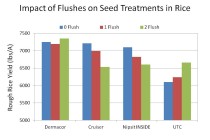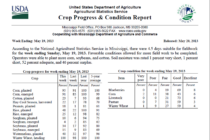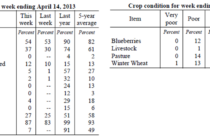Corn Disease Update: June 7, 2013, and Specific Information Regarding Northern Corn Leaf Blight
Northern corn leaf blight and common rust continue to be identified in corn fields throughout the south Delta. Determining the specific corn hybrids planted in each field is an important first step every season. For the most part, save for a couple of fields, NCLB has still been detected at extremely low levels (= 1 lesion per leaf per plant).





